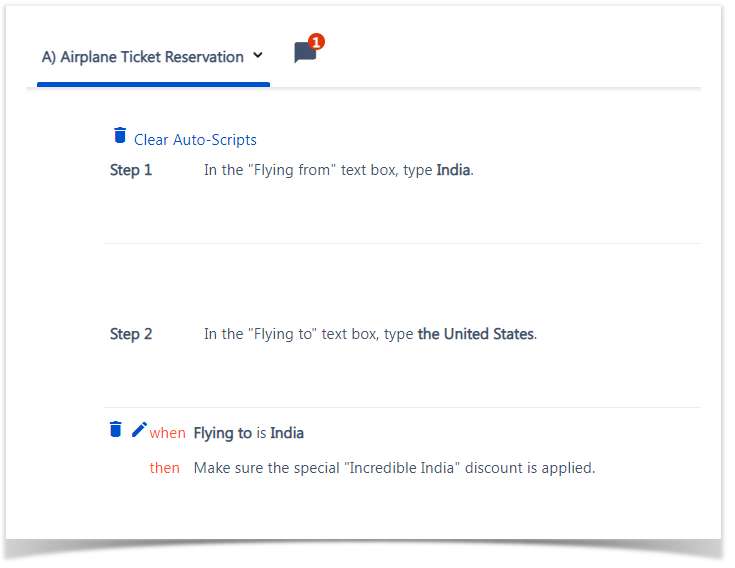Page History
...
Learn how to easily create detailed, consistent execution instructions with conditional expected results for your manual testing efforts.
Note: to learn more about DesignWise Automate and Gherkin scripting, please refer to the "Usage" button in the top right of the Scripts → Automate screen.
With DesignWise’s Auto-With Xray Test Case Designer Scripts feature, you can quickly transform optimized test data like this…this
… into customizable scripts. You can even add automatically - generated Expected Results to your steps if you want to.
Remember Mad Libs?
Creating Auto-scripts in DesignWise Xray Test Case Designer is similar to that. Instead of adding adjectives and nouns into pre-formed sentences, however, you’ll be more like the author of the Mad Libs sentences themselves. You need to:
- Create sentences containing execution instructions that will be common to most of the test scripts and
- Identify “spaces” to indicate where DesignWise Xray Test Case Designer should “fill in the blanks” you’ve left with test data appropriate for each scenario.
| UI Steps | ||
|---|---|---|
| ||
|
...
|
...
|
...
|
...
|
...
|
...
|
...
|
...
|
...
Don’t forget to save each step before you add your next one! Thankfully, |
...
Xray Test Case Designer notifies you under the last edited step that there are unsaved edits. Click on different test cases at the bottom half of your screen (preview section that mirrors Scenarios screen) to see how your script steps will change. Finally, in the “Finish” section you may want to add some instructions that will appear only once at the end of all of the scenario scripts. |
Incorporating “Parameterized expected results” into your plans
In the tests shown above for example, we might want to include this Expected Result every time the necessary values appear together in a test case:
...











